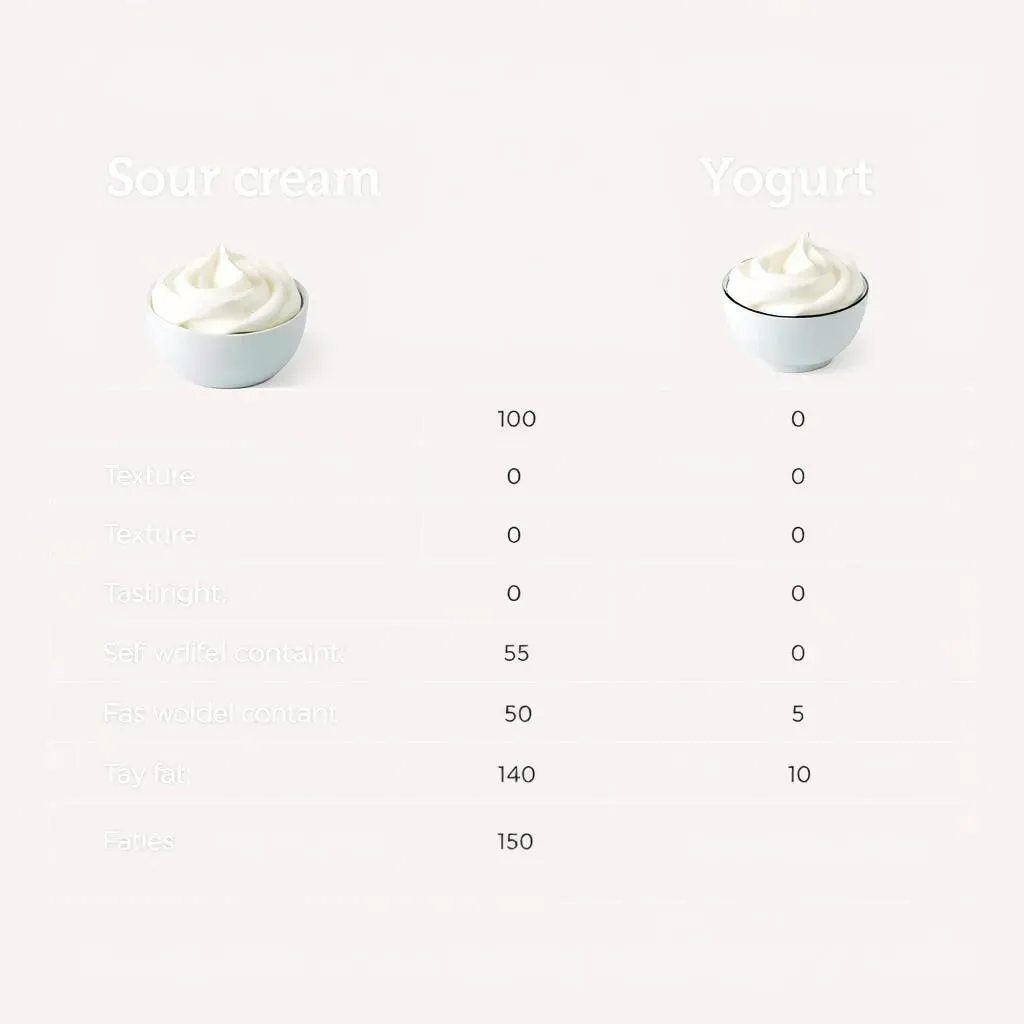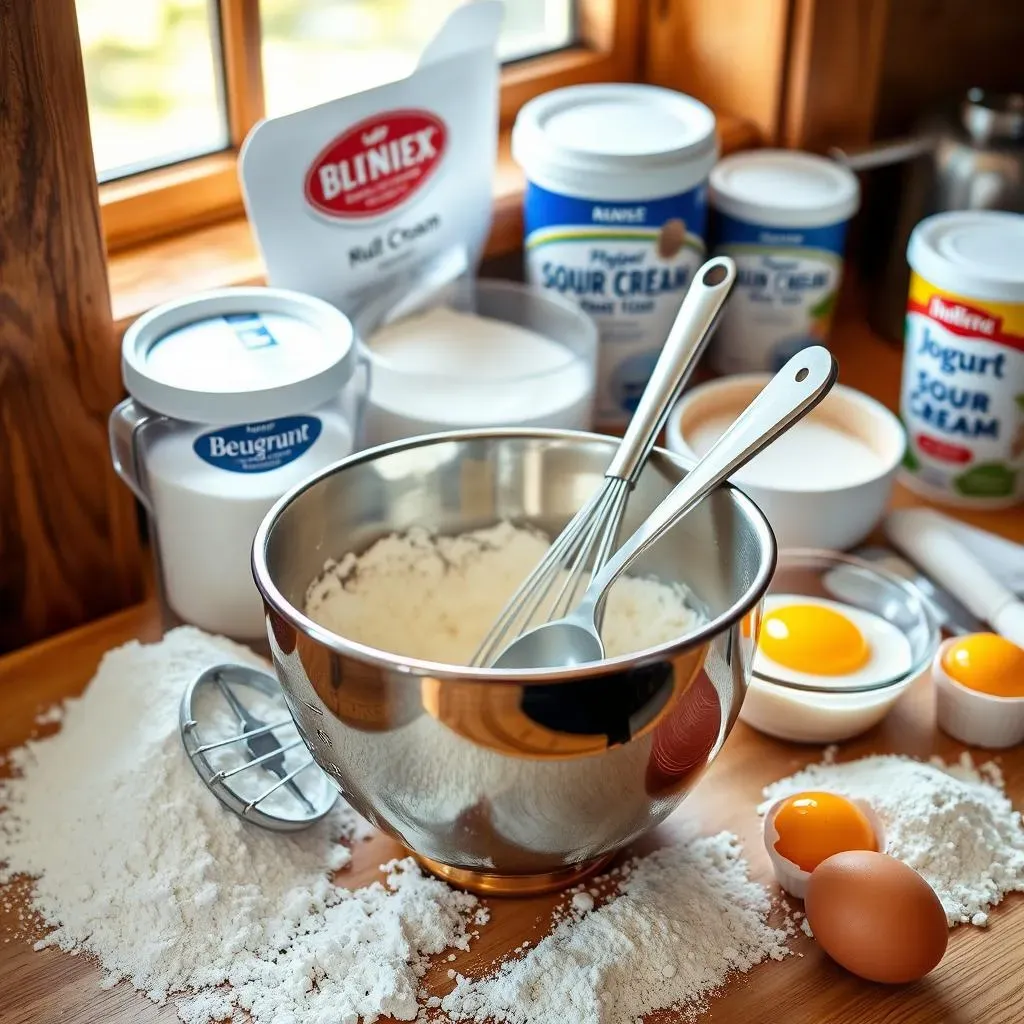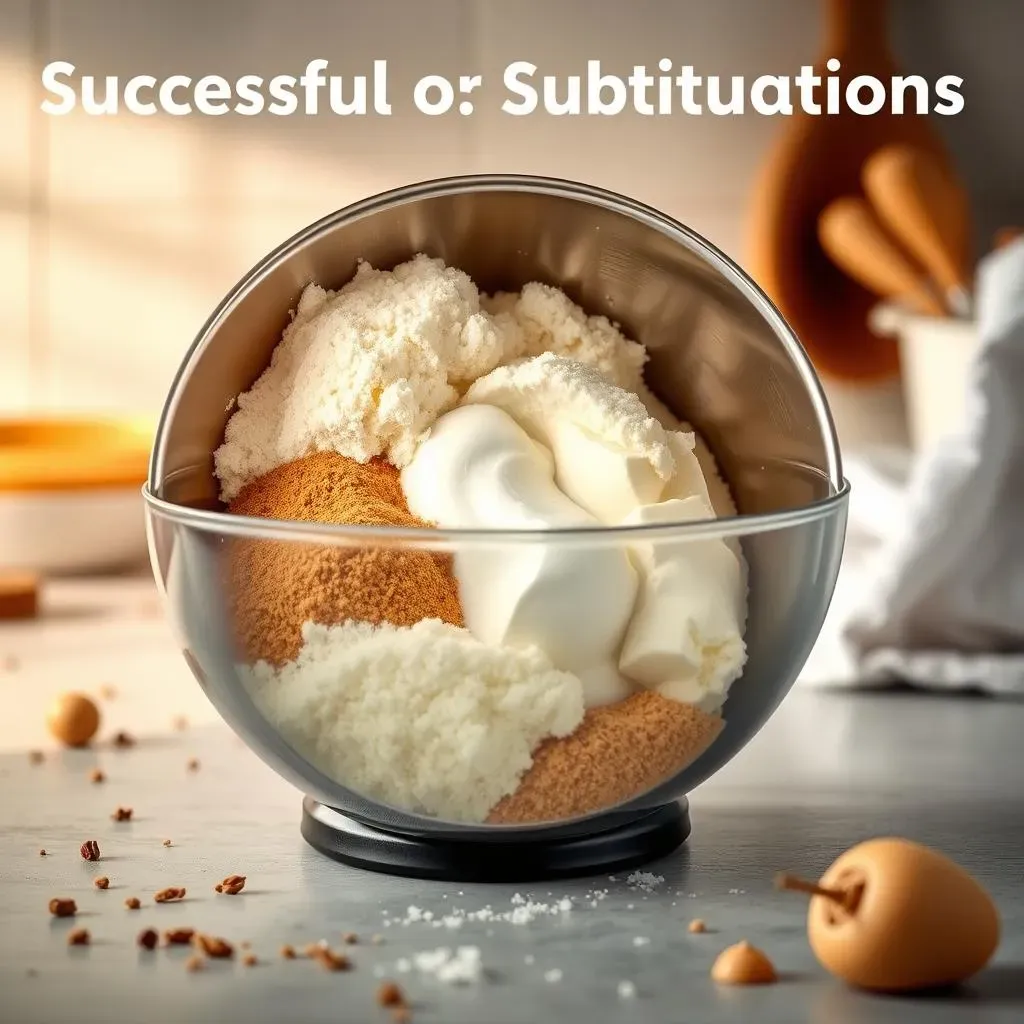Table of Contents
Ever stared blankly at a baking recipe, only to realize you're missing a key ingredient – yogurt? Don't panic! We're diving into the delicious debate: can sour cream be substituted for yogurt in baking? This article is your ultimate guide to understanding the nuances of this common baking dilemma. We'll explore the key differences between sour cream and yogurt, examining their impact on texture and taste in your favorite baked goods. We'll then equip you with practical tips and tricks for making successful substitutions, ensuring your next baking adventure is a triumph, not a flop. Whether you're a seasoned baker or just starting out, this article will give you the confidence to experiment and achieve baking perfection, even when faced with ingredient shortages. So, let's unravel the mystery behind "can sour cream be substituted for yogurt in baking" and unlock your baking potential!
Understanding Sour Cream and Yogurt: Key Differences

Understanding Sour Cream and Yogurt: Key Differences
So, you're tackling the sour cream versus yogurt question? That's a great starting point! The main differences lie in their production methods and resulting textures and tastes. Sour cream is essentially cultured cream – cream that's been fermented with bacteria, giving it that signature tangy flavor and thick, creamy consistency. Think of it as a richer, more decadent cousin to yogurt. Yogurt, on the other hand, is made from fermented milk, resulting in a thinner texture and a slightly sharper, more acidic taste. The fat content also varies greatly; sour cream is typically higher in fat than most yogurts, contributing to its richness. This fat content plays a crucial role in baking, affecting the moisture and texture of your finished product. For instance, using sour cream in a cake might lead to a more tender crumb, while yogurt could result in a slightly drier, tangier treat. Considering these differences is key to successful substitutions. Want to learn more about substituting sour cream for other ingredients? Check out our guide on sour cream substitutes!
Ingredient | Texture | Taste | Fat Content |
|---|---|---|---|
Sour Cream | Thick, Creamy | Tangy, Rich | High |
Yogurt (Plain) | Thinner | Tart, slightly acidic | Varies (can be low or high fat) |
Now, let's talk about how these differences affect baking. The higher fat content in sour cream contributes to moisture and a tender crumb in cakes and muffins. Yogurt, being less fatty, can sometimes result in a drier final product, unless you compensate with additional liquid. The tanginess of both ingredients also comes into play. Sour cream offers a milder tang, while plain yogurt can be quite sharp. This is something you'll want to consider when choosing a substitute, especially in recipes where the overall flavor profile is delicate. Need to substitute sour cream in a specific recipe? Check out our article on substituting sour cream for yogurt!
- Consider the fat content when choosing a substitute.
- Adjust liquid amounts if necessary to compensate for differences in texture.
- Taste test your batter to ensure the tanginess level is to your liking.
Baking with Sour Cream vs. Yogurt: Texture and Taste

Baking with Sour Cream vs. Yogurt: Texture and Taste
Cakes and Muffins: A Textural Tale
Let's talk cakes and muffins! Sour cream, with its higher fat content, acts like a secret weapon for creating a wonderfully tender crumb. The fat molecules coat the gluten strands in the flour, preventing them from forming long, tough chains. This results in a softer, more moist, and less dense final product. Think of it as a luxurious velvet texture, compared to yogurt's slightly drier counterpart. Yogurt, while still a great baking ingredient, can sometimes lead to a more compact texture in these types of baked goods. The difference is subtle, but noticeable. Need a hand with another substitution? See our guide on sour cream for milk substitutions!
But don't count yogurt out just yet! The tartness of yogurt can add a delightful zing to lemon cakes or poppy seed muffins, enhancing the overall flavor profile. It's all about balance – the right amount of yogurt can contribute a pleasant acidity without making the baked good too dry. The key is to understand how the ingredient's properties affect the final result. The best way to understand the difference is to experiment!
- Sour cream: Creates a tender, moist crumb.
- Yogurt: Can result in a slightly drier, more compact texture.
- Consider the recipe's flavor profile when choosing a substitute.
Quick Breads: A Tangy Twist
Quick breads, like banana bread or cornbread, offer a different playing field for sour cream and yogurt. In these recipes, the leavening agents (baking soda or powder) are the stars of the show, and both sour cream and yogurt can contribute nicely to the overall moisture and flavor. Sour cream, with its richness, adds a delightful softness to banana bread, complementing the sweetness of the bananas. It creates a moist, tender crumb that's perfect for dipping in coffee or milk. Curious about other substitutions? Check out our article on sour cream for buttermilk!
Yogurt, with its tang, can provide a pleasant counterpoint to the sweetness of quick breads, adding a delightful complexity to the flavor. It can also contribute a slightly more open crumb structure, depending on the recipe. In cornbread, for example, yogurt can create a slightly more moist and less crumbly texture compared to using sour cream. It's all about finding the perfect balance between moisture, texture, and flavor.
Ingredient | Banana Bread Texture | Cornbread Texture |
|---|---|---|
Sour Cream | Soft, moist | Slightly dense |
Yogurt | Slightly less moist | More tender |
Cookies and Brownies: A Balancing Act
Now, for the fun stuff: cookies and brownies! In these recipes, the interplay between fat, moisture, and flavor becomes even more critical. Sour cream, with its high fat content, can contribute to a chewier texture in cookies and a fudgier texture in brownies. The richness of sour cream adds a delightful depth to the flavor, complementing chocolate or other bold flavors. Ever wondered about other dairy options? Our guide on cream cheese substitutes might just be what you need!
Yogurt, on the other hand, might not be the ideal choice for cookies and brownies unless you carefully adjust the recipe. Its lower fat content might result in a drier, less rich final product. However, its tanginess can offer a unique twist, especially in recipes that call for a more acidic element. It's all about carefully considering the specific recipe and how the ingredients interact. Sometimes, the best way to find out is to experiment!
"The key is to experiment and find what works best for you and your palate!" - Anonymous Baker
Successful Substitutions: Tips and Recipes

Successful Substitutions: Tips and Recipes
Making the Swap: Sour Cream for Yogurt
So, you're ready to try swapping sour cream for yogurt? Great! Remember, a 1:1 substitution isn't always perfect. Sour cream's higher fat content means your baked goods might be richer and moister. Yogurt, with its thinner consistency and sometimes sharper tang, could lead to a slightly drier or more acidic result. To compensate, you might need to adjust the liquid in your recipe. If using yogurt, you may need to add a little extra milk or oil to maintain moisture. With sour cream, you might reduce liquid slightly to prevent a soggy end product. It’s all about achieving that perfect balance.
Let's say your recipe calls for 1 cup of yogurt. Try substituting with 1 cup of sour cream. However, if you notice the batter seems too thick, add a tablespoon or two of milk at a time until you reach the desired consistency. If using sour cream instead of yogurt, start by using the same amount, and if the batter seems too wet, reduce the liquid by a tablespoon at a time until you get the right consistency. Always taste test your batter before baking! This allows you to adjust sweetness or tang as needed. For more detailed guidance on specific substitutions, check out our guide on sour cream for yogurt substitutions!
- Start with a 1:1 substitution.
- Adjust liquid as needed for consistency.
- Taste test before baking.
Recipe Adjustments: Fine-Tuning for Flavor
Beyond simple substitutions, consider how the flavors will interact. Sour cream offers a milder tang, while yogurt can be quite sharp. If your recipe relies on a delicate balance of flavors, using sour cream might slightly alter the final taste. For instance, in a delicate lemon cake, the added richness of sour cream might slightly mute the lemon’s brightness. If you're using sour cream in a recipe that calls for yogurt, consider reducing the amount of other sweet ingredients, like sugar, to compensate for the richer taste. Need help with another ingredient? Check out our guide on sour cream for milk in cornbread.
Conversely, if you're swapping yogurt for sour cream, the increased tartness might require a slight sugar boost to balance the flavors. A pinch of salt can also help to enhance the overall flavor profile, regardless of which ingredient you choose. Remember, baking is a journey of experimentation. Don't be afraid to tweak recipes and discover your own perfect balance. Experimentation is key!
Substitution | Potential Adjustments |
|---|---|
Sour cream for yogurt | Reduce liquid, adjust sweetness |
Yogurt for sour cream | Increase liquid slightly, add a pinch of salt |
Beyond Dairy: Exploring Alternatives
Looking for dairy-free options? Several plant-based alternatives can mimic the role of sour cream and yogurt in baking. Many vegan sour cream and yogurt products are available, offering similar textures and tangy flavors. However, keep in mind that the fat content and consistency might vary, so adjustments to your recipe might still be necessary. Looking for more options? Check out our guide on cottage cheese as a substitute!
For instance, some vegan sour cream substitutes might be thicker than their dairy counterparts, requiring a reduction in liquid. Others may be less tangy, necessitating a boost in lemon juice or vinegar to achieve the desired acidity. Always check the product’s label for information on fat content and consistency to help guide your recipe adjustments. Remember, even with plant-based substitutes, taste testing is crucial to ensure your baked goods are perfectly balanced.
- Read product labels carefully.
- Adjust liquid and acidity as needed.
- Taste test before baking!